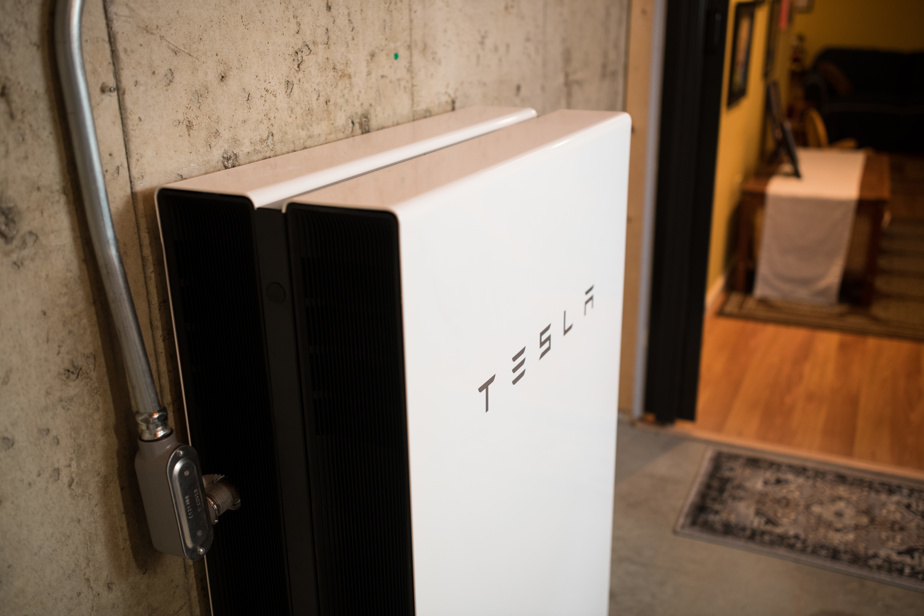Despite climate disruption, a Vermont electricity provider promises to eliminate power outages by, among other things, financing the installation of batteries at residential customers. A strategy that Hydro-Québec is currently testing in the west of the island of Montreal, we learned The Press.
Green Mountain Power (GMP), headquartered about 20 minutes from Burlington, Vermont, presented its “zero outage” approach (Zero Outages Initiative) to state regulatory authorities on October 9.
It plans to invest up to US$30 million in energy storage, primarily by installing battery systems at its residential customers, in 2025 and 2026. These systems will be provided to “those who live in the most rural areas of Vermont hardest hit by storm damage, and often least able to pay [pour des batteries] », Explains GMP in its authorization request.
GMP has around 3,000 customers already equipped with rented or purchased batteries.
During last winter’s storms, customers with battery systems retained power during approximately 2,300 separate events, for more than 77,000 hours. Several escaped during the entire outage.
Extract from Green Mountain Power’s authorization request
GMP therefore plans to install “1,500 to 1,600 additional batteries” in two years, a spokesperson told us.
Under study in Quebec
As part of a pilot project started at the end of 2022, Hydro-Québec installed batteries at customers in the boroughs of L’Île-Bizard, Pierrefonds-Roxboro and Saint-Laurent, and the municipalities of Kirkland, Dollard- des-Ormeaux, Pointe-Claire and Dorval.
“We are evaluating the impact of these residential batteries for our customers and our network in the event of outages and during periods of peak winter consumption,” said a Hydro spokesperson, Cendrix Bouchard, by email.
The 20 participating households were selected from among subscribers to the Flex D rate (dynamic pricing) who had expressed their interest following a newsletter sent to the sector. They are equipped with a 10 kWh lithium ion (Li-ion) battery, the model or cost of which Hydro did not want to disclose, “since the pilot is not completed”.
This project is expected to last three years, “it is too early to conclude on a subsidized program or any other initiative”.
These batteries offer other benefits beyond troubleshooting, GMP noted in its application to Vermont. The accumulated energy can, for example, be used to reduce consumption during peak periods, or at times when rates are highest.
This “tremendous resource” should be accessible to all customers who need it “and not just to those who can buy or rent a system”, argues GMP.
Coping with climate change
Climate change is increasing the frequency, scale and devastation of storms, says the Vermont supplier, referring to last July’s floods and last winter’s snow.
GMP therefore proposes to invest massively in its network to “create by 2030 an energy system where consumers can benefit from zero breakdowns”.
In addition to batteries, the supplier wants to invest up to 250 million US dollars to make its network more resistant to storms. In some areas it will bury the lines. In others, it will protect them from falling trees, using “covered conductors with spacers” (spacer cables).
In Quebec, the idea of burying the lines came back in force after the ice storm last April. Burying the entire network is not realistic, because it would cost around $100 billion, Prime Minister François Legault declared at the time.

PHOTO JOSIE DESMARAIS, LA PRESSE ARCHIVES
A Hydro-Québec team is mobilized in Montreal after a pylon fell following last April’s freezing rain storm.
“It’s not 100 billion in one year [mais] probably over 25 to 30 years, so we have to be a little more logical,” objects François Bouffard, professor in the department of electrical engineering and computer engineering at McGill University.
The cables should at least be buried in all new residential developments, he believes. “In this way, ultimately, we will eventually have a much more resilient and reliable network. »
Burial “is part of our strategies to reduce breakdowns”, but it “is not applicable everywhere”, we were told at Hydro, mentioning two pilot projects for reduced burial: rather than pass through concrete conduits, the cables are placed on a bed of sand under a mesh, which reduces costs and work time.
“Covered conductors with spacer” were also the subject of a pilot project, but this led to another solution “on crosspiece, without spacer”, the deployment of which should begin in 2024. Wooden poles are also replaced by others in composite, more resilient and durable.
Increase in breakdowns
Even excluding major weather events, the average duration of outages per customer increased by 63% at Hydro between 2012 and 2022, denounced the Auditor General of Quebec last December.
The average annual service interruption time per customer, which is highly influenced by weather events, is also increasing, data provided by Hydro show. This “raw continuity index” reached 848 minutes per customer in 2022, almost four times more than in 2015 (213 minutes), among other things because of the derecho of May 2022.
Other actions aim to improve the resilience of the network, Hydro argued after the ice storm last April. With vegetation considered responsible for 40 to 70% of outages, the state company is spending nearly $120 million to control it, almost twice as much as in 2018.
Who is Green Mountain Power?
GMP is Vermont’s largest electricity distributor, with more than 270,000 customers. A subsidiary of the Quebec company Énergir, GMP is independently managed and regulated by Vermont. It appeared in the 2022 rankings of the 100 most influential companies (magazine TIME) and the five most innovative companies (magazine Fast Company).
